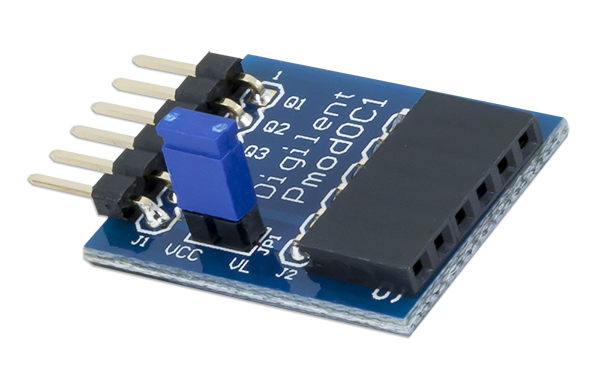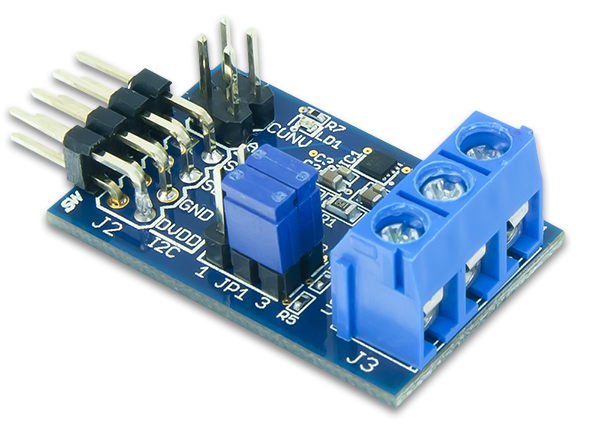Welcome back to the Digilent Blog!
It’s been awhile since we last had some specific focus on Pmods, so I decided that we should get back to our favorite blog series (or at least my favorite). This week we’re going to check out some of the Pmods that occasionally get overlooked– the power Pmods. These Pmods include screw terminal modules, transistor modules, and power monitors.
Let’s start with the PmodCON1. As a screw terminal module, this Pmod does not have any special IC’s integrated into the chip, giving it four general purpose inputs and/or outputs (GPIO) as well a pair of power and ground pins. So what makes this Pmod fall under the power category? It’s the screw terminals. With their larger size, it is possible to attach large gauge wire, such as 14-gauge wire, to one of the terminals and screw the wire into place. The benefit of this is that with larger gauge wire it is possible current can be passed through your system. Screw terminals with their large surface area also help dissipate any extra heat that comes with running a high power system.
However, because there are not any ICs on this board to help regulate power, users have to make sure that they do not supply too much power from an external power supply, since this Pmod could potentially be connected directly to the system board. It is recommended that you use some transistors to help regulate the passage of additional current.

Luckily, Digilent offers two Pmods that use transistors to do just that, the PmodOC1 and the PmodOD1. These are two different transistor modules, an open collector module (PmodOC1) and an open drain module (PmodOD1), representing a BJT and a MOSFET, respectively. Both of these modules allow for higher power applications to be run by signals from lower power boards. Although these two modules technically operate differently, as they are two different types of transistors, on a fundamental level, both of these will have their higher current output “turn on” when you apply a positive voltage to their four GPIO pins.
The BJT module (PmodOC1) is better suited for lower current applications as each of its transistors can supply up to 100 mA, although it has a voltage threshold of up to 40V. On the other hand, the PmodOD1 can supply 3.0 A through its MOSFETs with a peak current of 4.1A (for under five seconds), but it has a max voltage of 20V.


Driving high current applications is one thing, but it another to monitor your current power usage. To help keep track of your current draw, Digilent has made the PmodPMON1. This Pmod uses a combination of a digital potentiometer and current sense amplifier to determine if the measured current (and thus the corresponding increased voltage from the current amplifier) is greater than the set voltage from the digital potentiometer. If this is the case, the Pmod will let the system board know through it’s alert pin if the measured current is higher than the set point. Your system board can measure the reported current value through I²C and then adjust the power draw or shut off a peripheral component if need be.

As you can see, these Power Pmods allow for much cooler, high power designs to be run from your system board. What kind of project would you want to use them for?
